Philips OLED909 is undoubtedly a showcase of engineering by the Dutch manufacturer for 2024. When it comes to picture quality, the TV presents what one can expect from OLED technology – deep blacks and infinite contrast. Additionally, it is equipped with META technology (MLA micro-lenses), which significantly enhances its brightness and further improves the already excellent viewing angles of organic matrix TVs. As a result, HDR effects look phenomenal, and the TV will satisfy most users looking for great image quality in this class of devices. In terms of motion fluidity, the OLED909 does not disappoint either. The 144 Hz panel, combined with a full set of gaming features, such as HDMI 2.1, ALLM, and VRR, makes it an ideal choice for gaming enthusiasts. Both dynamic shooters and spectacular racing games will look smooth and responsive. Regarding usability, the TV is equipped with the Google TV operating system, just like the model OLED809. This solution is significantly better than TitanOS, which can be found in the lower series OLED769 from the Dutch manufacturer. It provides access to a vast number of applications, easy operation, and support for voice assistant functionality. In addition, there is a four-sided Ambilight system that adds magic to every movie night, creating a unique atmosphere. However, it is not a device without flaws. The biggest problem regarding the picture is the average smoothness of tonal transitions – color banding is noticeable in subtle gradients, which may be bothersome for more discerning viewers. In the context of PC collaboration, although it is phenomenal equipment for gamers, it may not be the best choice for text or graphic work due to the lack of chroma 4:4:4 support. In terms of usability, it's worth mentioning a few disappointments. The remote control in this model really impressed us – it is well-designed, and the backlit numeric keypad is a great addition, especially when using the TV in the evening. Unfortunately, it mainly operates on infrared, so we found ourselves irritated several times when we had to aim precisely at the screen. This is a bit strange, considering that in this price range we expected more modern solutions. The lack of recording features or picture-in-picture (PiP) also surprised us – these are features that are often standard in this segment. Despite these drawbacks, the Philips OLED909 is a TV that impresses with its picture quality, gaming features, and unique additions like Ambilight. The biggest question to ask oneself is: is it worth it? It is great equipment, but its high price raises the question of whether it is the best choice in terms of price to quality ratio.
- Matching (Score)
- Our verdict
- TV appearance
- Where to buy
- Contrast and black detail
- HDR effect quality
- Factory color reproduction
- Color reproduction after calibration
- Smoothness of tonal transitions
- Image scaling and smoothness of tonal transitions
- Blur and motion smoothness
- Console compatibility and gaming features
- Input lag
- Compatibility with PC
- Viewing angles
- TV efficiency during daytime
- Details about the matrix
- TV features
- Apps
- Playing files from USB
- Sound
Philips OLED909 vs Philips OLED820
Direct compare
OLED909

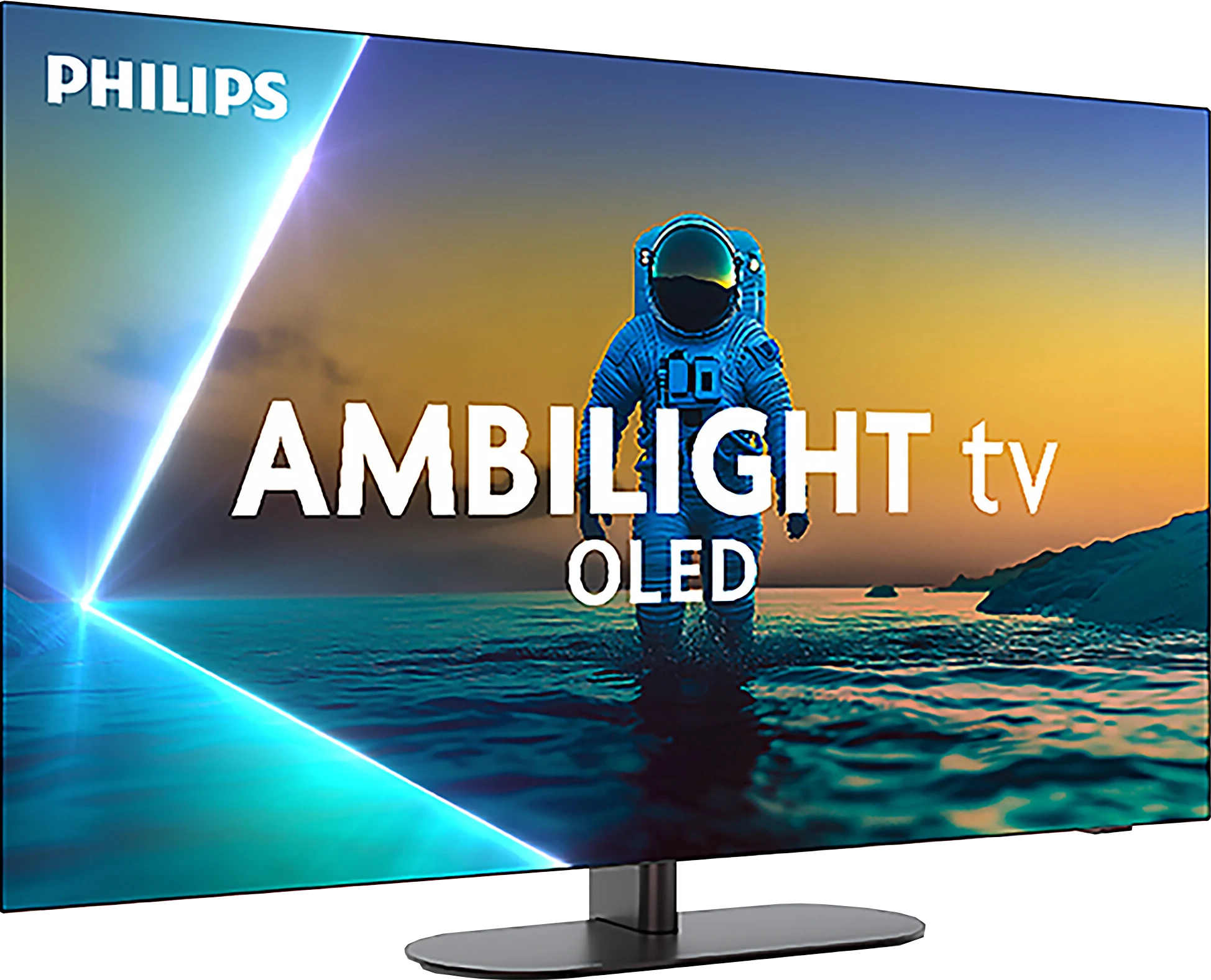
Panel type: WRGB OLED
Resolution: 3840x2160
System: Google TV
Model year: 2024
Complete the survey to find out the result

Panel type: WRGB OLED
Resolution: 3810x2160
System: Google TV
Model year: 2025
Complete the survey to find out the result

Overall rating
8.1
8.0
Movies and series in UHD quality
8.2
8.3
Classic TV, YouTube
8.6
8.6
Sports broadcasts (TV and apps)
8.8
8.4
Gaming on console
9.5
9.4
TV as a computer monitor
6.4
6.5
Watching in bright light
5.7
5.7
Utility functions
6.7
6.8
Apps
9.6
9.6
Sound quality
8.1
7.7
Complete the survey to find out what fits your preferences
Advantages
Perfect blacks - OLED
High HDR brightness
Support for advanced HDR formats – HDR10, HDR10+, Dolby Vision, HGiG
Good motion fluidity - 144Hz
Great gaming compatibility – ALLM, VRR, low input lag
One of the best viewing angles on the market
Excellent color reproduction after calibration
Four-sided Ambilight system
GoogleTV operating system – rich selection of applications, voice control, easy operation
Good sound quality – built-in soundbar
Ideal contrast and black thanks to the WOLED panel
High HDR brightness (up to 1300 nits) and wide coverage of the DCI-P3 color palette (99%)
Support for multiple HDR formats including Dolby Vision and HDR10+
Great motion fluidity, no motion blur, refresh rate up to 144 Hz
Full support for gamers: HDMI 2.1 (2 ports), VRR, ALLM, HGiG, Dolby Vision in games, low input lag
Ambilight, which realistically affects image perception and distinguishes the TV from the competition
GoogleTV system with a huge app base and great voice assistant
Extras in the form of: Backlit remote and rotating stand
Support for Dolby Atmos and DTS:X audio formats
Disadvantages
Visible tonal transitions
Infrared remote
Font display issues (PC)
No recording function from built-in tuners and PIP
Price compared to competitors
Only two HDMI 2.1 ports (with 2 consoles and a soundbar, we are forced to "juggle" the cables)
Lack of many classic "TV" features, e.g., USB recording or PiP mode, the infrared remote can be annoying
Slight issues with color matching (much better than last year but far from the competition)
Font readability issues when working with PC (lack of full Chroma 4:4:4 support)
Our verdict
The Philips OLED820 is a very successful and significant step forward compared to last year's model, the OLED 819. For many people, the main reason for purchasing it will, of course, be Ambilight: the multi-colored lighting system that sets Philips TVs apart from the competition. It’s no surprise, as it made a huge impression on us as well. It's not just an impressive gadget, but a real addition that can change the perception of the content being watched and add depth to it. However, Ambilight should not overshadow what the OLED820 offers as a screen. Here we have almost infinite contrast, high brightness in HDR films, and excellent color reproduction, which improves even more after slight tweaking or professional calibration. This setup guarantees one of the best pictures available on the market today, and we are also aware that the TV offers something unique and unprecedented elsewhere. It is also equipment that works well for gaming. A 144 Hz panel and HDMI 2.1 ports open up access to the full capabilities of new-generation consoles, and low input lag makes gameplay exceptionally responsive. The operating system also deserves praise – Google TV. This is a much better solution than the proprietary Titan OS found in lower-end Philips models, such as the OLED770. And this is a serious argument for paying extra for this model. A larger app library, a more efficient voice assistant, and fewer system errors contribute to a noticeably better everyday experience. Of course, the Philips OLED 820 is not free from minor shortcomings – some software issues are apparent, and certain features could be better refined. Nevertheless, the overall presentation is very solid. Perhaps the OLED820 is not a revolutionary TV, but it is a very successful and well-balanced option in Philips’ lineup. It combines excellent picture quality, a complete set of features for gamers, and a unique addition in the form of Ambilight. If you’re looking for a solid mid-range OLED that not only offers good picture quality but also something distinctive and exceptional, the OLED820 should be high on your shopping list.
TV appearance





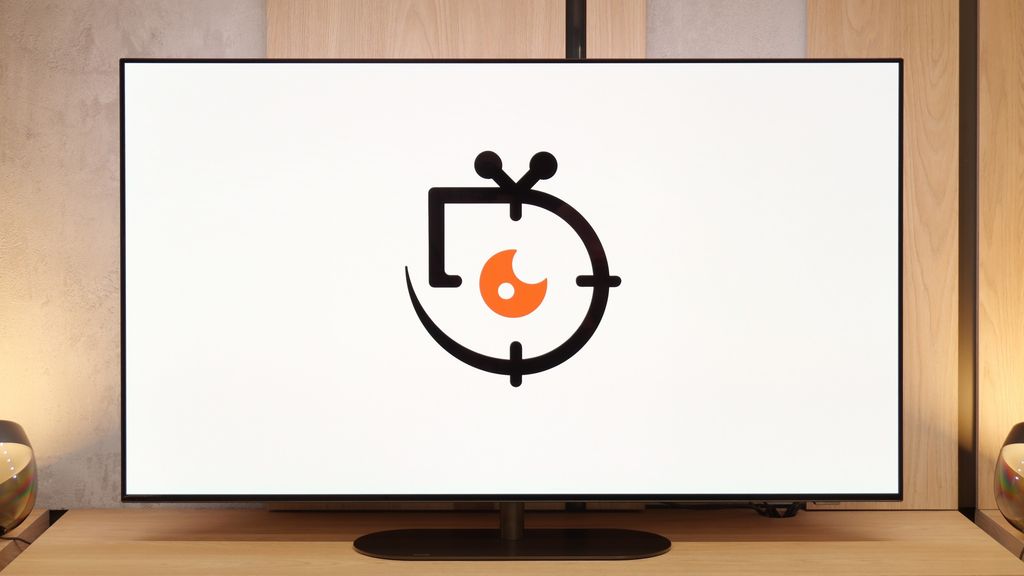
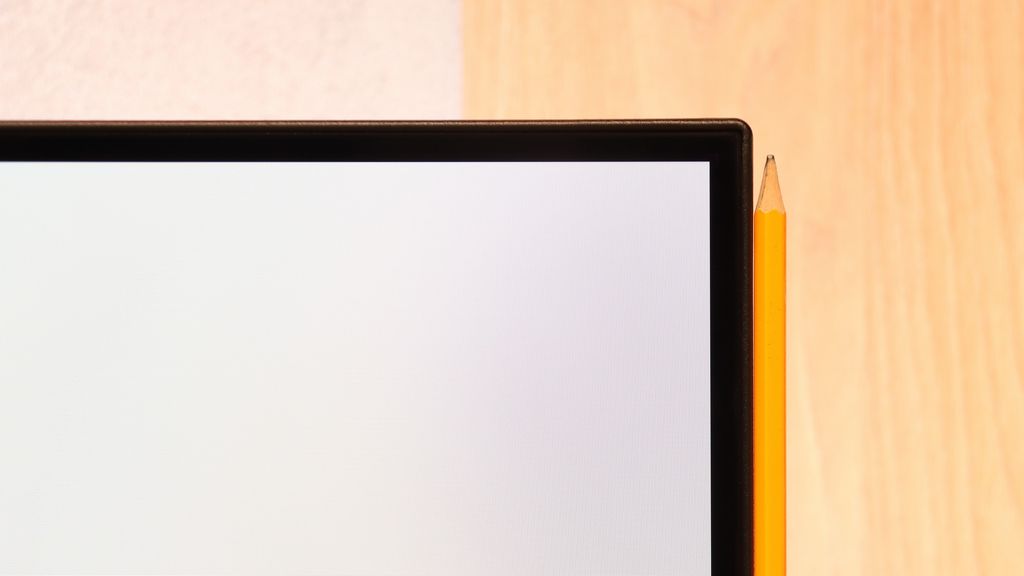
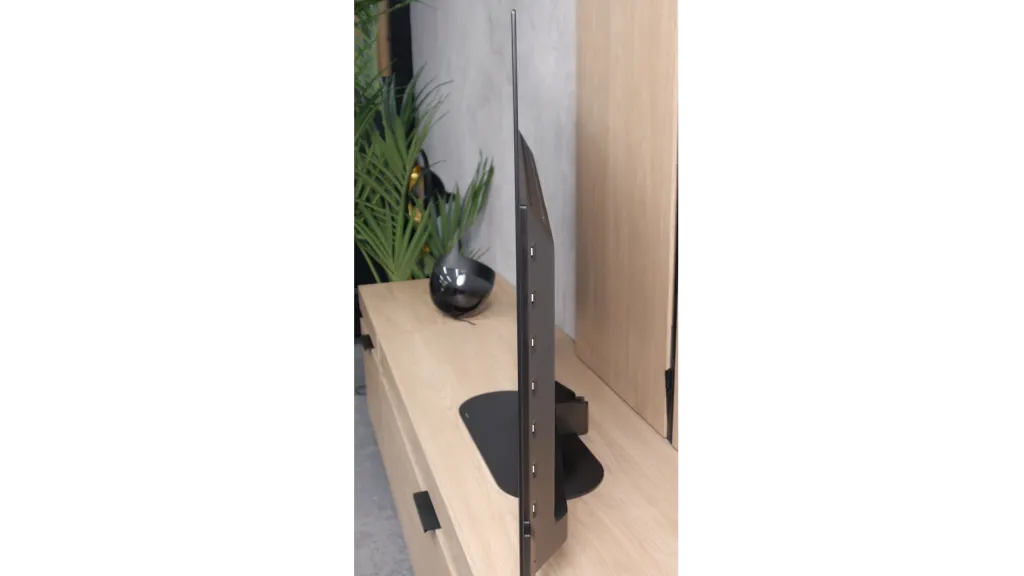
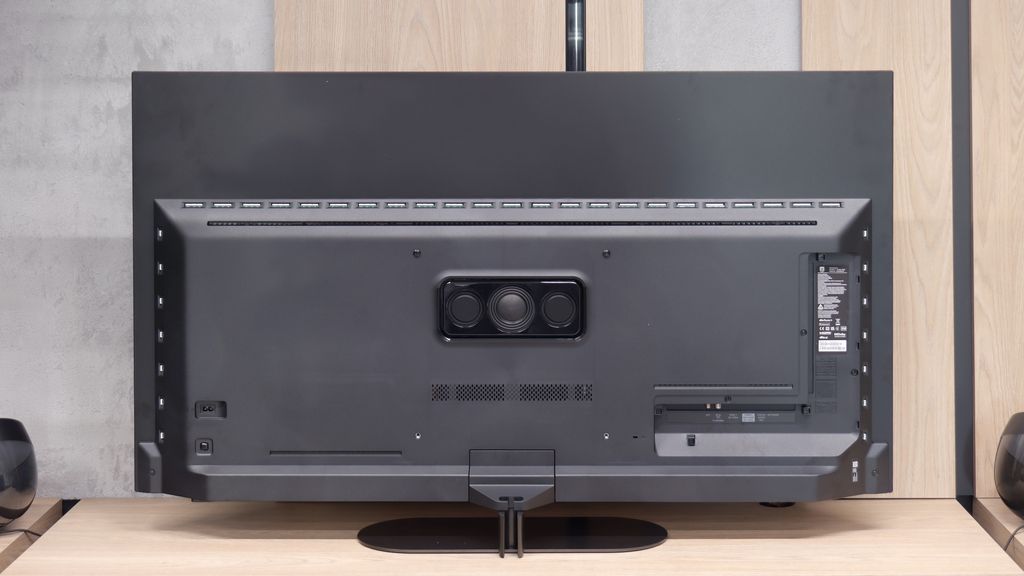
Contrast and black detail
10/10
10/10
Contrast:

Result
∞:1

Result
∞:1

Result
∞:1

Result
∞:1

Result
∞:1

Result
∞:1

Result
∞:1

Result
∞:1

Result
∞:1

Result
∞:1
Halo effect and black detail visibility:

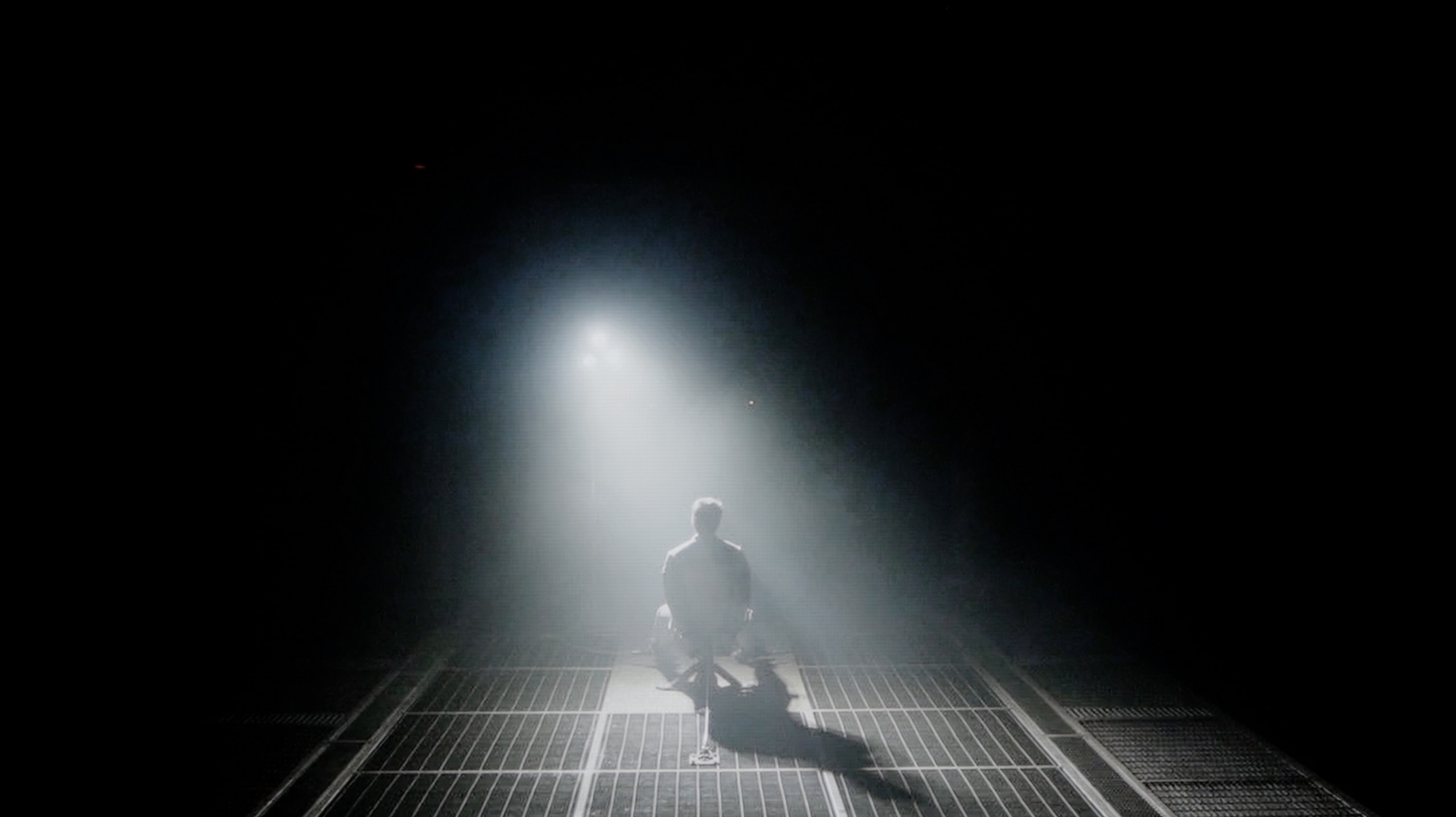
Philips OLED909 in the category of contrast and black presents exemplary achievements characteristic of OLED technology. Tests on five screens confirmed infinite contrast, making the television an ideal choice for movie lovers in darkened rooms. A scene from the film Oblivion impresses with the excellent separation of light from the lamp, allowing for full appreciation of the precise reproduction of even the smallest details. The scene from the film Sicario 2 also performs well, where the bright lights of the helicopter were perfectly separated from the dark background. However, in the same scene, the phenomenon of desaturation, or loss of color saturation, is noticeable. Although this is not directly related to the assessment of contrast and black, it is worth mentioning, especially if perfect color reproduction in every situation is crucial. Despite this minor blemish, the black generated by the Philips OLED909 remains incredibly deep and deserves the highest marks.
Contrast and black are the domain of OLEDs, and the Philips OLED820 is no exception. The WOLED panel from LG Display works the same as in the LG C5 models or the Samsung S90F, providing exactly what we expect – perfect black and infinite contrast. Whether we are watching challenging scenes full of fine details or simpler frames flooded with uniform black, the television always performs excellently. It separates light from darkness with surgical precision, creating an extraordinary sense of depth in the image. And while different technologies can be debated, in this category, OLED simply reigns, and the Philips OLED820 only confirms this rule.
HDR effect quality
7.8/10
7.5/10
Luminance measurements in HDR:

Result
1394 nit

Result
1471 nit

Result
1594 nit

Result
1552 nit

Result
708 nit

Result
1035 nit

Result
1235 nit

Result
1356 nit

Result
1315 nit

Result
521 nit
Scene from the movie “Pan” (about 2800 nits)


Scene from the movie “Billy Lynn” (about 1100 nits)


Static HDR10


Dynamic: Dolby Vision
Dynamic: Dolby Vision


HDR luminance chart:
Philips OLED820
HDR luminance
Luminance of RGB colors
Philips OLED909
HDR luminance
Luminance of RGB colors
The Philips OLED909 impresses with the quality of its HDR effect, achieving up to 1500 nits of peak brightness in tested scenes. This is an excellent result, placing this television among the best OLED models on the market. The MLA matrix, also used in models like the Panasonic Z95A and LG G4, plays a key role here, allowing for exceptionally bright and detailed reproduction of dynamic scenes. However, it's worth noting that in the most demanding scene from the movie The Meg, the brightness drops to around 700 nits. This is a typical phenomenon in OLED technology, where intensely bright full-screen images cause a limitation of luminance. Nevertheless, the HDR effect still looks very good, and the television performs better than most competitors under similar conditions. The wide color gamut coverage also deserves praise. The OLED909 offers 95% coverage of DCI-P3, ensuring the television can display vivid and realistic colors.
When it comes to HDR quality, the Philips OLED820 uses the same class of WOLED panel that we find in its biggest competitors – LG C5 or Samsung S90F. This means we can count on truly solid performance. This year, mid-range OLED panels are capable of exceeding the threshold of a thousand nits, and the model tested reaches around 1300 nits in some films. This is an outstanding result that allows for an extremely precise depiction of the director's vision, as contemporary productions are mastered in such brightness ranges. Of course, there are situations where even the OLED820 has to compromise. Full-screen scenes flooded with white, like those in the movie The Meg, can drop brightness to 400–500 nits, which clearly weakens the effect. This is a characteristic of OLED technology that has not yet been fully eliminated. Despite this limitation, it is hard not to appreciate the HDR in this model – high luminance and wide coverage of the DCI-P3 color gamut at 99% make the picture simply look great.
Factory color reproduction
7.6/10
6.7/10


Factory Mode
After calibration
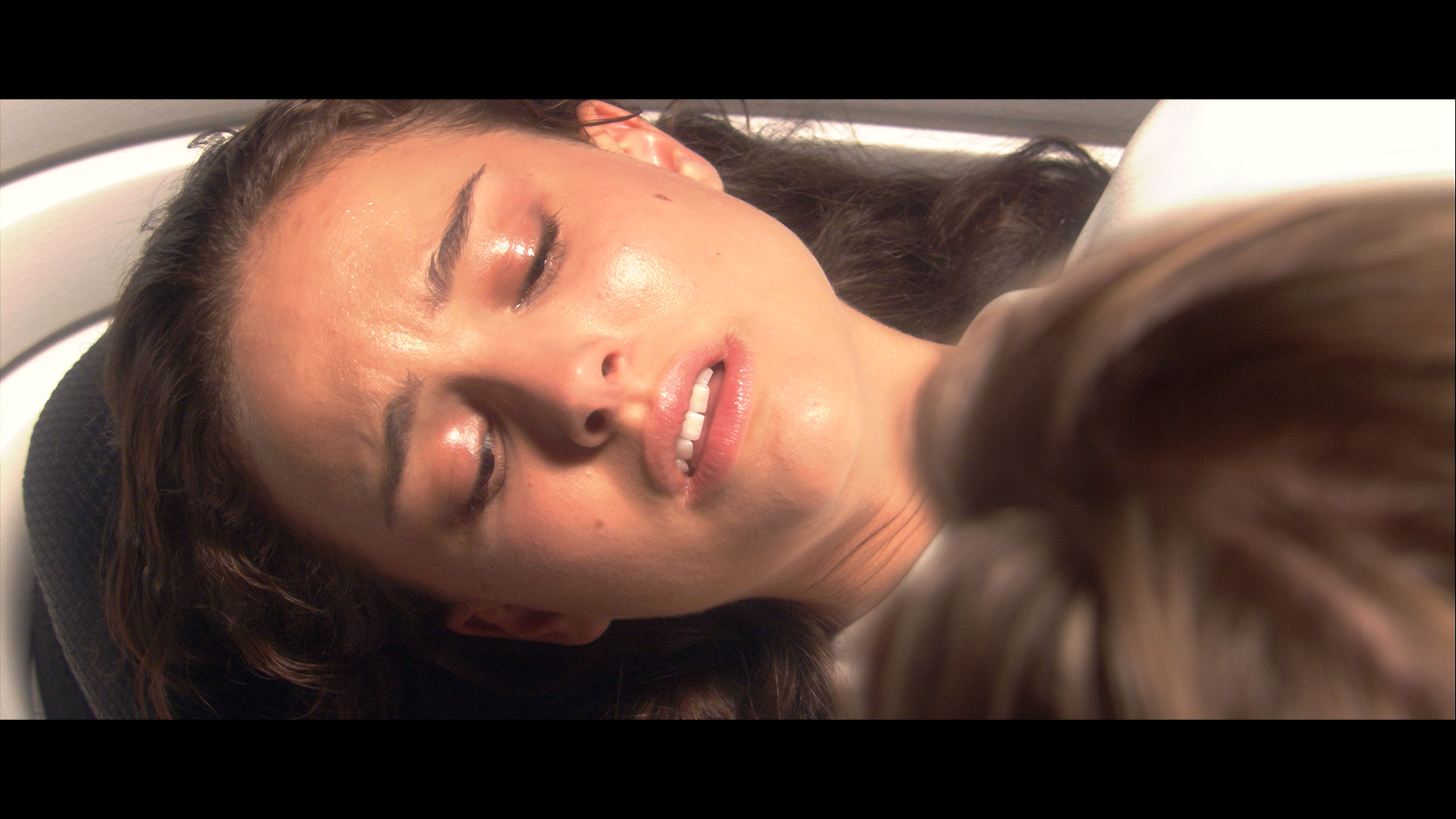
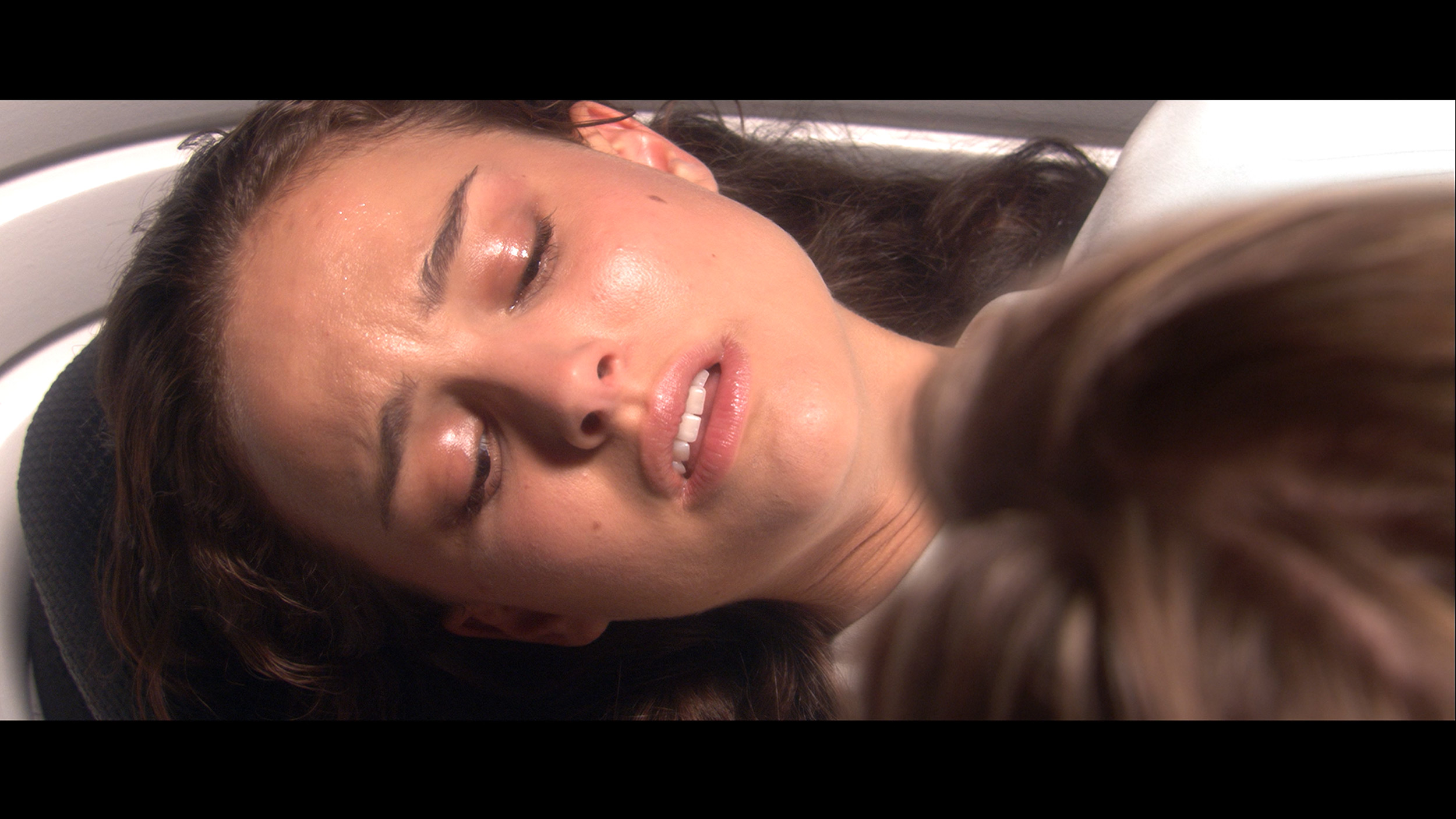
Factory Mode
After calibration
Like other televisions, the Philips OLED909 has been tested for color reproduction in factory modes. The best mode turned out to be Filmmaker Mode, but despite its name, it is not free of flaws.
The biggest problem is the white balance. Both in HD and 4K HDR content, there is a noticeable dominance of green and red shades, which causes a distinct yellowing of the screen. This effect is particularly visible in test materials, for example in the scene with Tom Cruise in the foreground, where the difference compared to the calibrated image is very clear.
Regarding brightness characteristics, the gamma in HD materials was boosted too much - it was below the reference value of 2.4, which gave the image a "milky" filter and affected the overall clarity. In the case of 4K HDR content, we noticed the opposite phenomenon – there is a clear drop at the beginning of the EOTF curve, indicating problems with reproducing the smallest details in dark scenes. Although the Filmmaker mode offers acceptable quality, noticeable errors in white balance and brightness characteristics show that the television requires additional calibration to fully reveal its potential in color reproduction.
The color reproduction in the factory settings really surprised us, and positively so. The Philips OLED820, switched to Filmmaker mode, immediately showed that it was quite well tuned in terms of color. The white balance was relatively accurate, though with a slight lack in the blue hue, which sometimes gave the image a slightly yellowish tint. However, this is not a flaw that particularly interferes with everyday viewing. A larger problem arose with the brightness characteristic. The gamma chart clearly deviated from the ideal, with the line being below the expected values, causing the image to be overly brightened, and the colors looked as if they were covered with a light milky filter. This effect was also noticeable in tests using the Colour Checker pattern, where more pronounced errors appeared.
Color reproduction after calibration
9/10
9.3/10




Philips OLED909 offers tools for image calibration, which significantly improves its quality. After calibrating the Filmmaker Mode, the television presents a much more natural color reproduction. The white balance after calibration looks very good. Although we noticed slight deviations in the blue hue in HD content, the errors fall within acceptable limits, and the image looks much better than in factory settings. The brightness characteristics, including gamma and EOTF, have also been distinctly improved. The television no longer has issues with excessive brightening or darkening of the image. Both dark and light details are now rendered correctly, making the image look very good in every scene. After calibration, the Filmmaker mode in the Philips OLED909 offers excellent image quality that will meet the expectations of even the more demanding users. The calibration fully utilizes the potential of this model.
After calibration, both the Filmmaker mode and the game mode gained quite a lot. A slight adjustment of the white balance and an improvement in brightness characteristics resulted in excellent outcomes for SDR content – the image looked almost perfect, natural and very close to the reference. In the case of HDR materials, the situation was similar; the colors looked stunning and it was hard to find anything to criticize. However, we noticed a certain feature that we had already pointed out when comparing scenes from the movie Billy Lynn. An analysis of the EOTF curve revealed that the television has a slight tendency to dim details in the blacks, which means that the darkest sections are not always displayed exactly as the director intended. Nevertheless, the effect after calibration is remarkable, and the OLED820 stands out as one of the more interesting screens in its class. It just needs a little bit of fine-tuning, and there's really nothing to be afraid of.
Smoothness of tonal transitions
4.6/10
6.5/10












The Philips OLED909 performs averagely in the category of fluid tonal transitions. The WOLED panel used in this model is not known for handling tonal transitions perfectly, and in the case of the OLED909, it appears to be slightly worse than competing models with similar panels. Subtle transitions and color connections are noticeable in bright and dark parts of the image, which may be particularly visible on more demanding scenes with subtle gradients. This effect can impact the perception of content, especially for users who pay attention to such details.
The fluidity of tonal transitions is unfortunately the Achilles' heel of the Philips OLED820. During tests, we noticed slight issues with color blending – both in bright and darker scenes, one can see characteristic banding, which detracts from the naturalness of the image. It must be admitted that compared to last year's OLED 819 model, there is a significant improvement, but nonetheless, the competition performs better in this category.
Image scaling and smoothness of tonal transitions
6.9/10
7/10
Smooth transition function

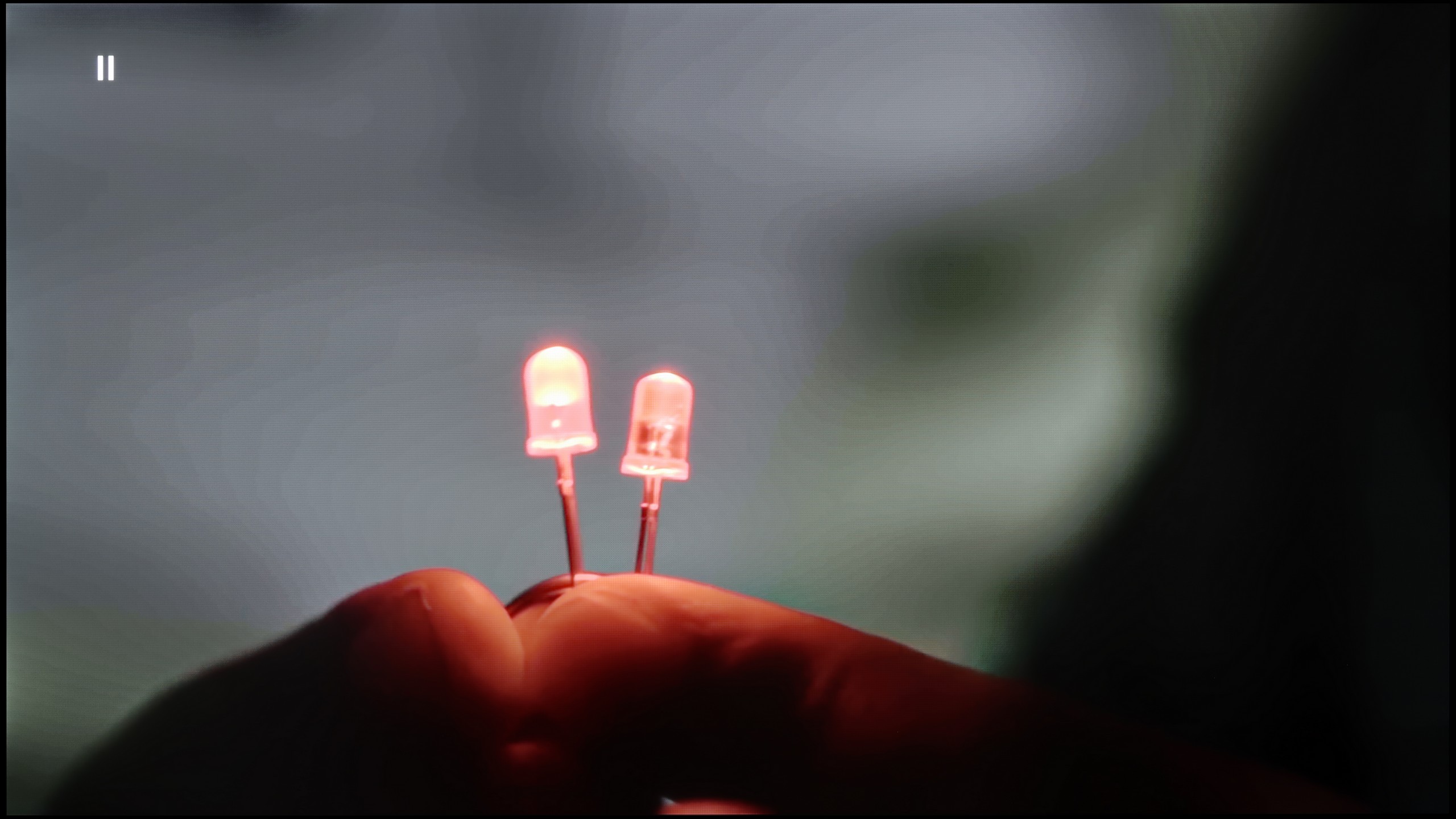
Image without overscan on the SD signal


Philips OLED909 offers a distortion reduction feature aimed at smoothing tonal transitions. Unfortunately, the effectiveness of this feature leaves much to be desired. Setting it to "Medium" yields some results, but it comes with the risk of blurring essential details in the image. For this reason, we do not recommend using this option unless you are focused on mitigating visible artifacts at the expense of detail.
When it comes to image scaling, the television presents a very pliable image, which may appeal to viewers who prefer a softer image. Those expecting sharper clarity will also find a solution, as image scaling can be adjusted according to individual preferences in the settings.
Fortunately, the earlier effects of the aforementioned posterization can be quite effectively mitigated. The "distortion reduction" feature set to medium handles unwanted color banding, improving the smoothness of tonal transitions. It does happen, however, that it works a bit too aggressively and smooths out some details – such as minor skin imperfections of the actors – but despite this, it can be considered worth using without major compromises. The upscaling in the OLED820 also performs well. The test image with the model is exceptionally soft, sometimes even too much so, although this can be alleviated by slightly increasing the sharpness in the picture menu – it’s a matter of personal preference. The lack of overscan issues with very low-resolution content is also commendable, meaning we don't have to worry that the image will be unnecessarily cropped.
Blur and motion smoothness
8.5/10
8.5/10

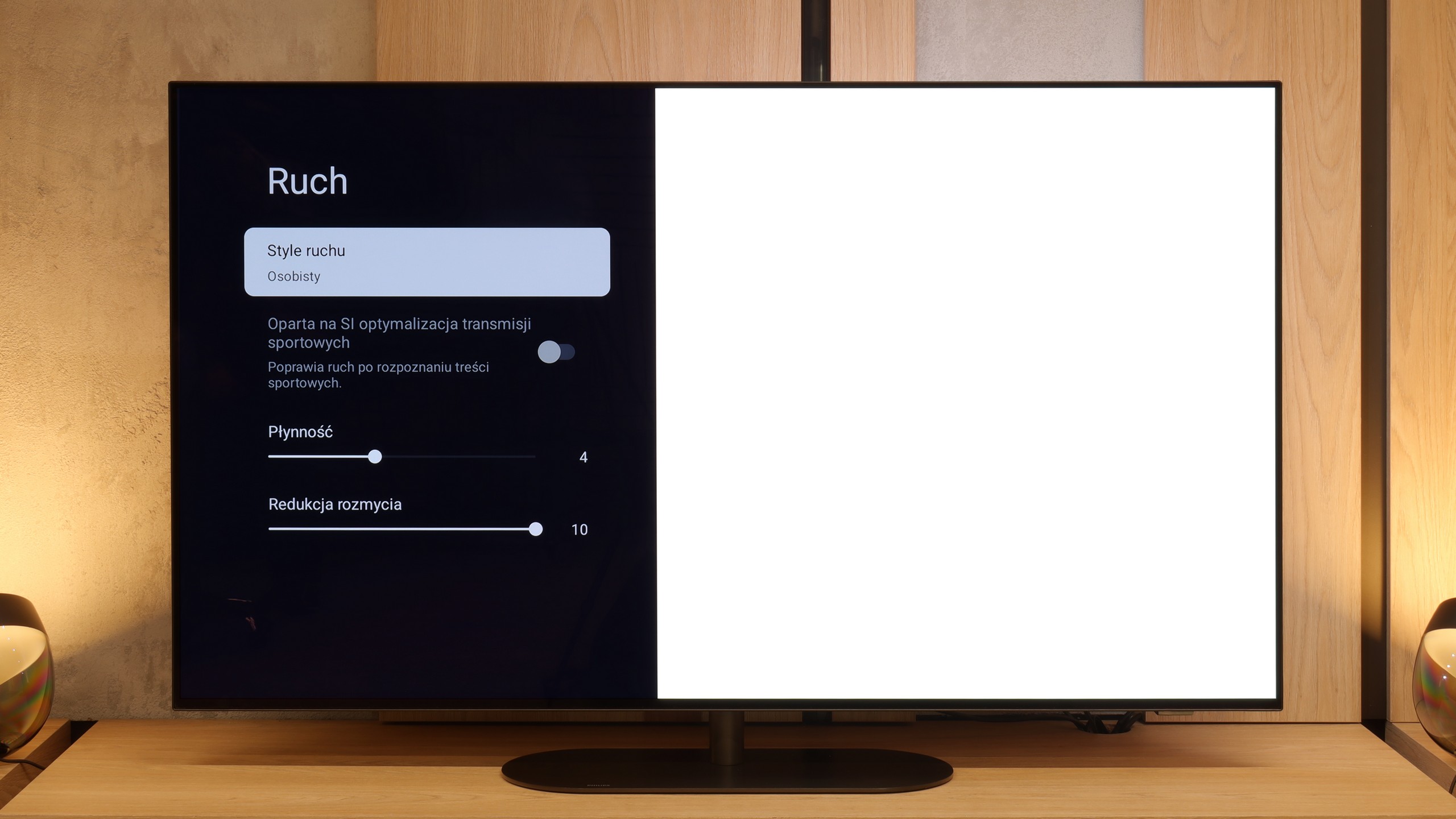
Blur (native resolution, maximum refresh rate):






Smużenie ():
Smużenie (4K@144Hz):



The Philips OLED909 with a 144 Hz panel offers excellent image fluidity, which should satisfy both movie lovers and gamers. Additionally, the television is equipped with a smoothing feature called "Motion Style," which allows precise adjustment of image fluidity to personal preferences. In the settings, we find two sliders: "Fluidity," which regulates the fluidity of motion in movies, and "Motion Blur Reduction," which helps eliminate minor artifacts and distortions in dynamic scenes. This feature works well, making even fast movements on the screen clear and readable.
Motion fluidity is an area where OLEDs always shine, and the Philips OLED820 confirms this rule. The panel itself offers a refresh rate of 144 Hz, which will mainly benefit PC gamers, but even with standard television sources or consoles, where 120 Hz is used, the motion is fast, sharp, and simultaneously smooth, without traces of ghosting. This is thanks to the outstanding response time between pixels, which ensures the image retains clarity in every dynamic scene. The manufacturer has also added its own smoothing feature called "Motion Style." In the menu, we find two sliders – the first, responsible for fluidity, allows us to adjust the amount of artificially added frames in movies. This way, we can choose a raw, cinematic character with a clearly visible film frame or a more theatrical image with smooth motion. The second slider is for reducing blurring, especially useful in sports broadcasts. Here, we definitely recommend setting it to the maximum value, as the effect is truly excellent.
Console compatibility and gaming features
10/10
9.8/10
- ALLM
- VRR
- VRR range40 - 144Hz48 - 144Hz
- Dolby Vision Game Mode
- Correct implementation of HGIG
- 1080p@120Hz
- 1440p@120Hz
- 4K@120Hz
- Game bar

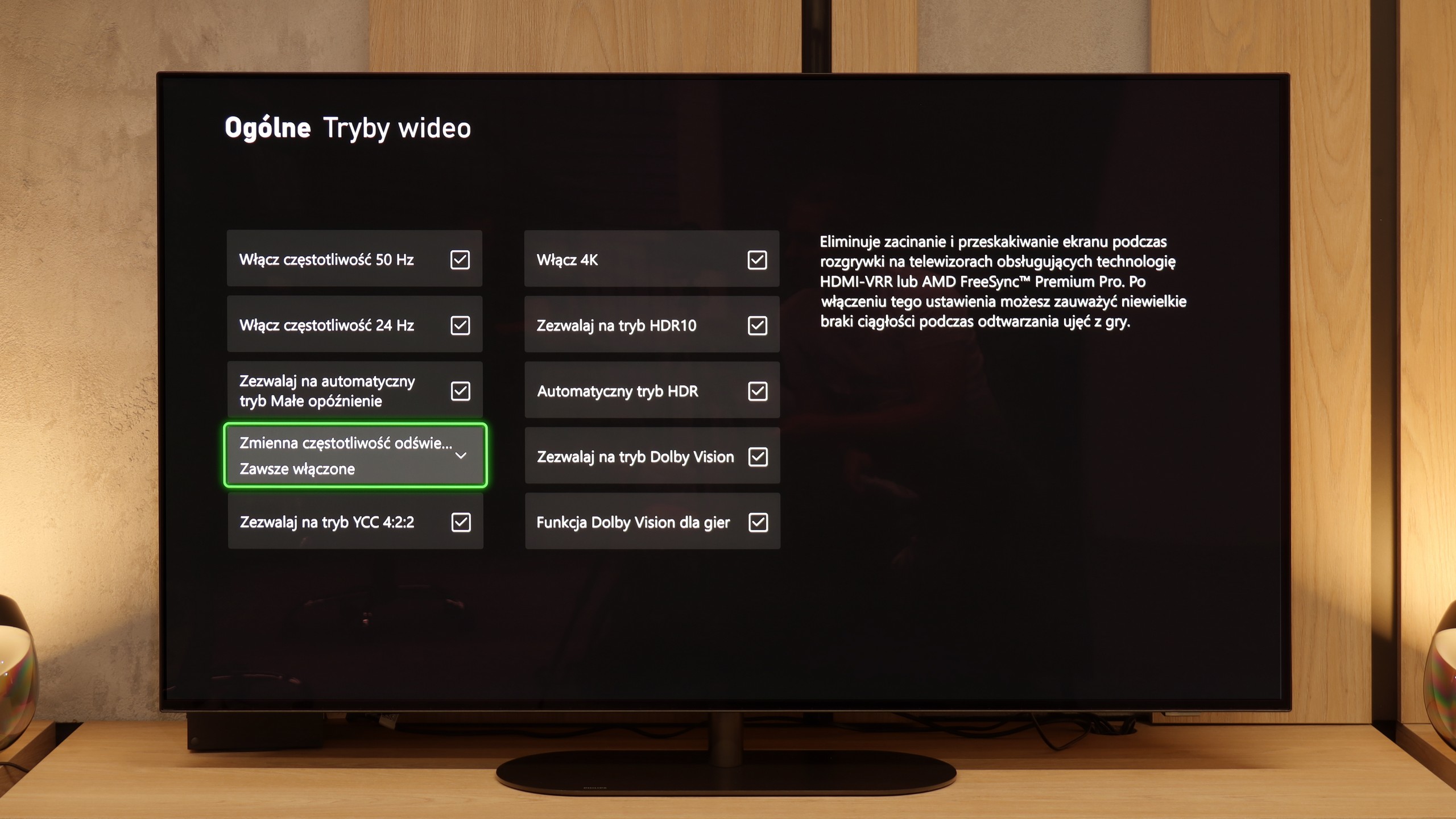

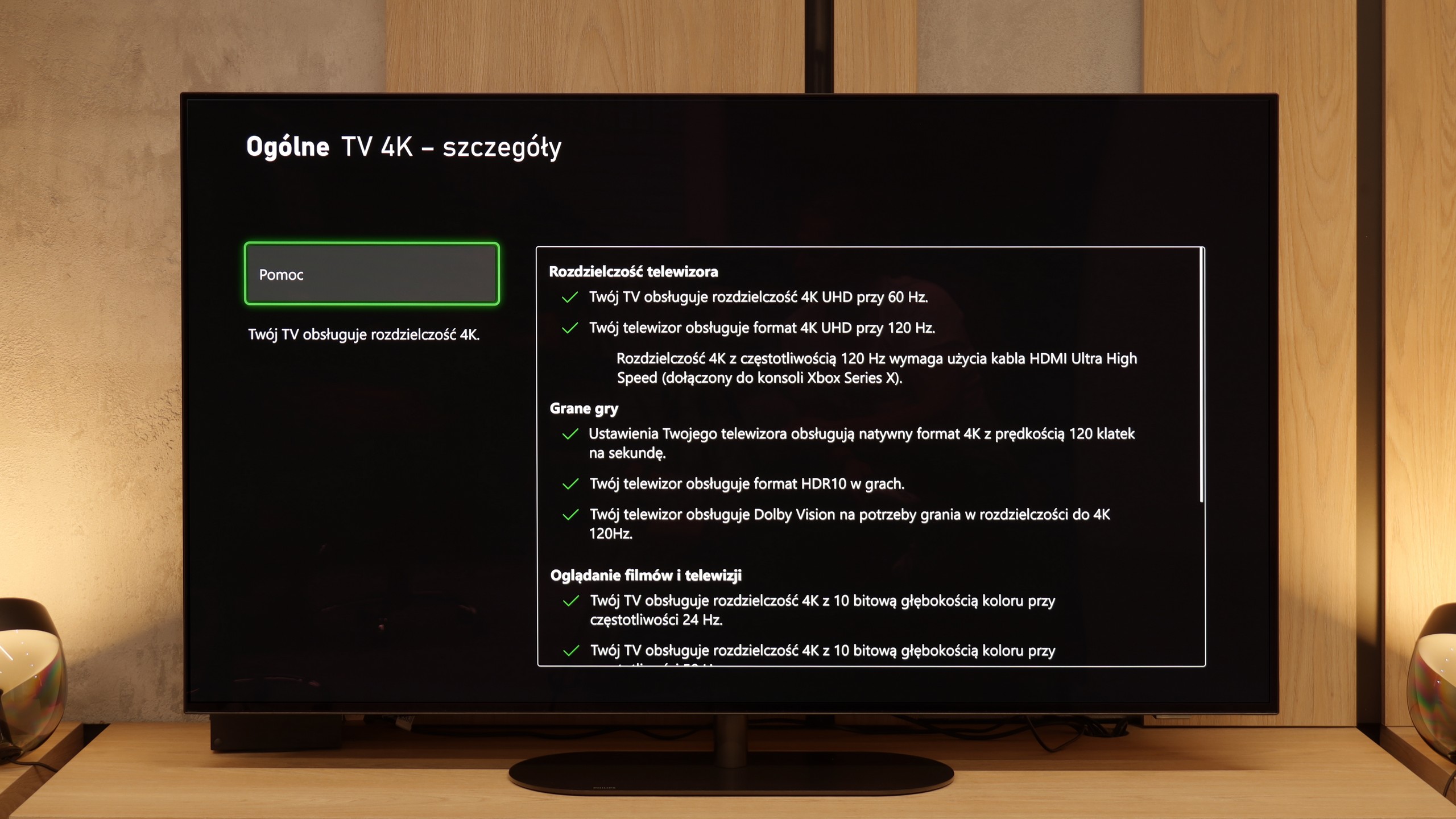

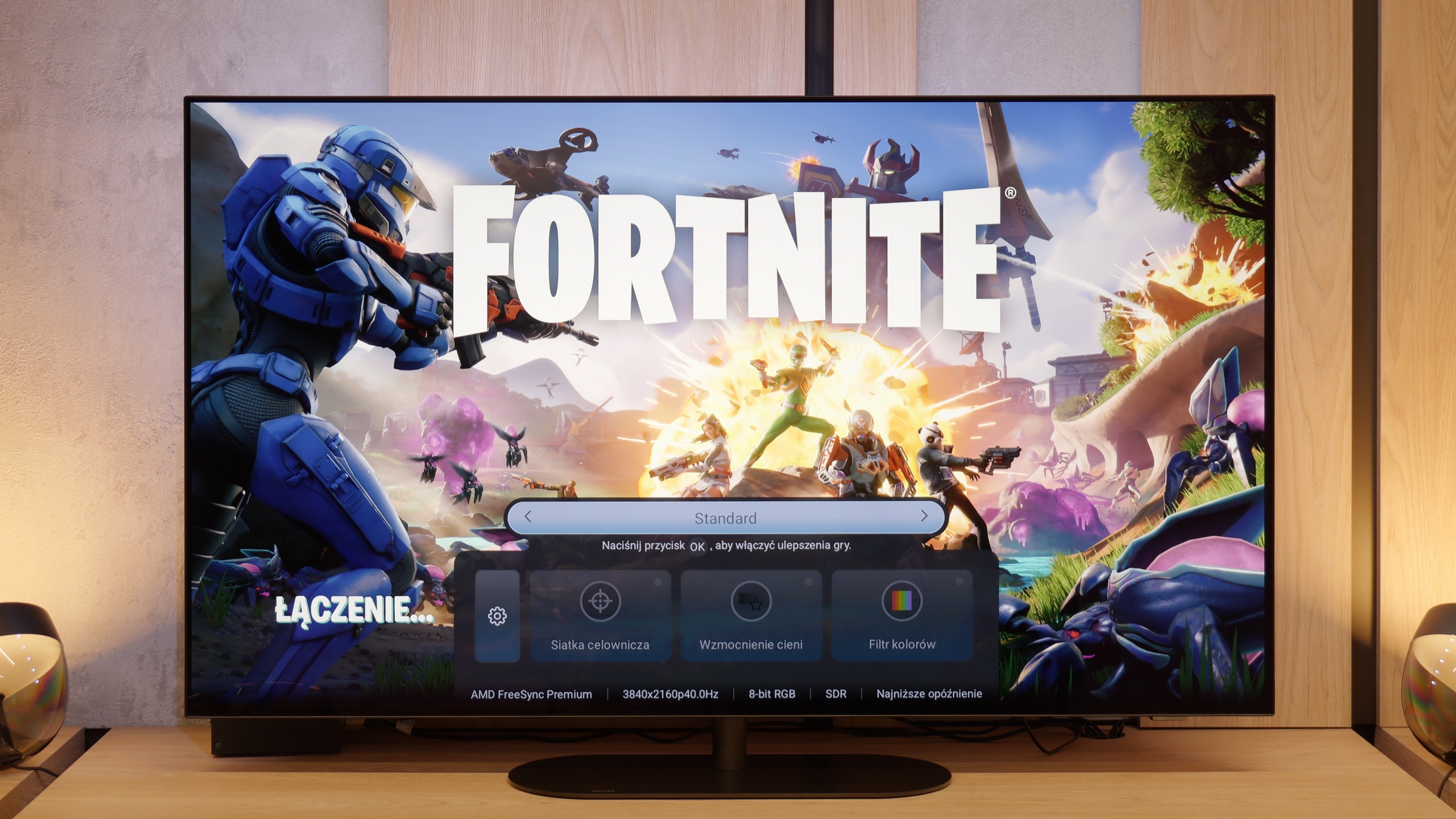

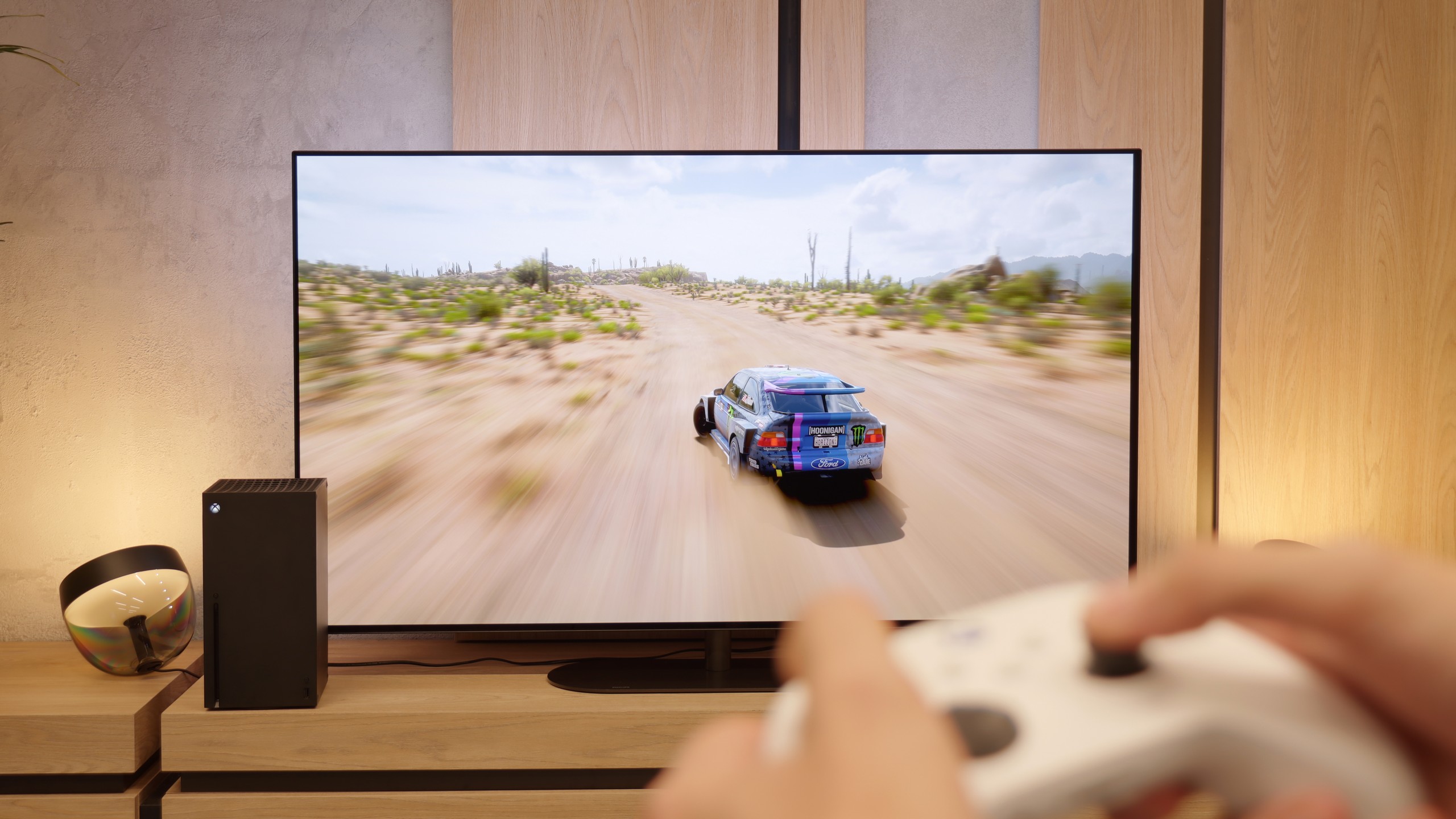
The Philips OLED909 is a television that meets practically all the requirements of gamers. Equipped with ALLM (Auto Low Latency Mode), VRR (Variable Refresh Rate), and support for Dolby Vision, it guarantees excellent gaming experiences. Additionally, the television offers very low input lag, ensuring that the response to player movements is instantaneous, which will be especially appreciated by fans of dynamic games.
The television easily supports any resolution at 120 Hz, and even higher refresh rates. The HGiG feature, responsible for the correct display of HDR content in games, works as it should, making the image in game mode balanced and tailored to the guidelines of console manufacturers.
The OLED909 also includes a Game Bar feature that allows for quick previewing and changing of game-related settings. Although the interface of this solution may seem less visually appealing than that of competitors, it serves its purpose well by offering all the most important options in one place.
Philips OLED820 is one of the most complete televisions for gamers. It practically has everything you could expect: two HDMI 2.1 ports with full bandwidth of 48 Gbps (too bad there aren't four), variable refresh rate VRR, automatic game mode ALLM, support for Dolby Vision in games, and a good implementation of the HGiG mode. The television also handles lower resolutions at 120 Hz without any issues, so you can count on great flexibility when choosing different picture modes on the console. Philips also adds Game Bar – a panel that allows you to change picture modes, add a crosshair, or view parameters. Although it looks quite clunky and is less polished than that of the competition, it serves its purpose. In practice, therefore, the OLED820, besides having a full set of four HDMI 2.1 ports, offers almost everything a gamer might need.
Input lag
10/10
10/10
SDR
HDR
Dolby Vision
Philips OLED909 achieves excellent results in the input lag category. Values of 13 ms at 60 Hz and 5 ms at 120 Hz are among the best results available on the market. Such low input lag ensures immediate response, which is crucial for gamers expecting maximum precision in dynamic games. The performance in Dolby Vision mode deserves special praise, where low input lag is also maintained. This allows gamers to enjoy not only smooth gameplay but also the full potential of HDR game visuals without any compromises. Philips OLED909 is, in this respect, one of the best choices for gaming enthusiasts.
The input lag in the Philips OLED820 is truly at a reference level. The measurement showed values below 5 ms, which places it at the very top of the TVs available on the market. Even the Dolby Vision mode does not cause problems in this regard, which is quite a rare phenomenon. In practice, this means lightning-fast responses to every movement, no noticeable delays, and full comfort in dynamic games. In short, outstanding results that will please even the most demanding gamers.
Compatibility with PC
6.4/10
6.5/10

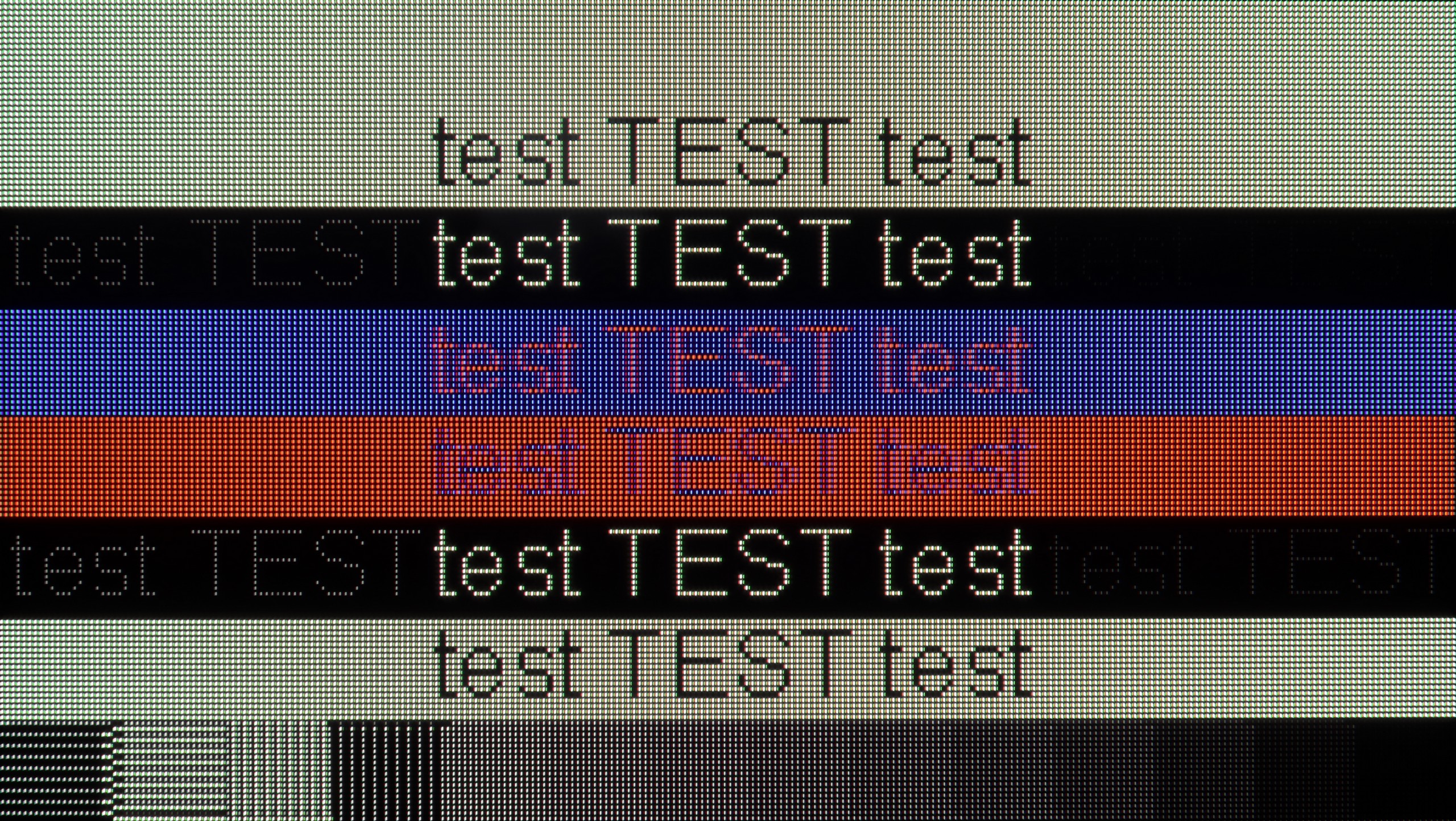
Philips OLED909 is a good choice for gaming on a computer. The television supports G-SYNC, provides very low input lag, and offers a refresh rate of 144 Hz in PC mode, making it an ideal solution for gamers who value smooth and responsive gameplay. However, for everyday work with text or graphics, the situation is a bit worse. While the readability of fonts is at an acceptable level, up close, it can be noticed that they appear slightly blurry. This is due to the lack of full implementation of chroma 4:4:4, which is responsible for perfect sharpness and clarity of fonts.
OLED909 will perform excellently in gaming applications, but for those planning to use the television mainly for text work, it may be less suitable. In such cases, it is worth considering a device with full support for chroma 4:4:4.
Collaboration with a PC for the Philips OLED820 varies depending on the application. For gaming, it performs exceptionally well: a high refresh rate of 144 Hz combined with G-Sync support provides smoothness and responsiveness that other televisions would envy. The situation is less favorable when it comes to text work. The lack of proper implementation of chroma 4:4:4 causes fonts on colored backgrounds to be slightly blurred, which significantly lowers work comfort. Therefore, it's hard to recommend the OLED820 as a screen for office work with text or numbers. It's a pity that the manufacturer didn't learn from last year's models and this flaw continues to persist.
Viewing angles
9.7/10
7.4/10
Philips OLED909 offers one of the best viewing angles available on the market. OLEDs are renowned for their excellent picture quality from various angles, but the use of micro-lens technology further enhances this ability. As a result, the television maintains excellent colors, contrast, and brightness even when viewing the picture from a significant angle. In practice, the OLED909 performs so well that it can compete even with televisions equipped with QD-OLED technology, which also provides wide viewing angles. This makes the television ideal for large rooms and watching together from different positions, without fear of losing picture quality.
The viewing angles on the Philips OLED820 are another advantage that should delight you. OLEDs have always been characterized by nearly perfect angles, so no matter where we look from, the image remains clear and readable. Indeed, the classic WOLED matrix does not match technologies like MLA OLED or QD-OLED, but it's still hard to criticize anything here. The angles are simply excellent.
TV efficiency during daytime
5.7/10
5.7/10

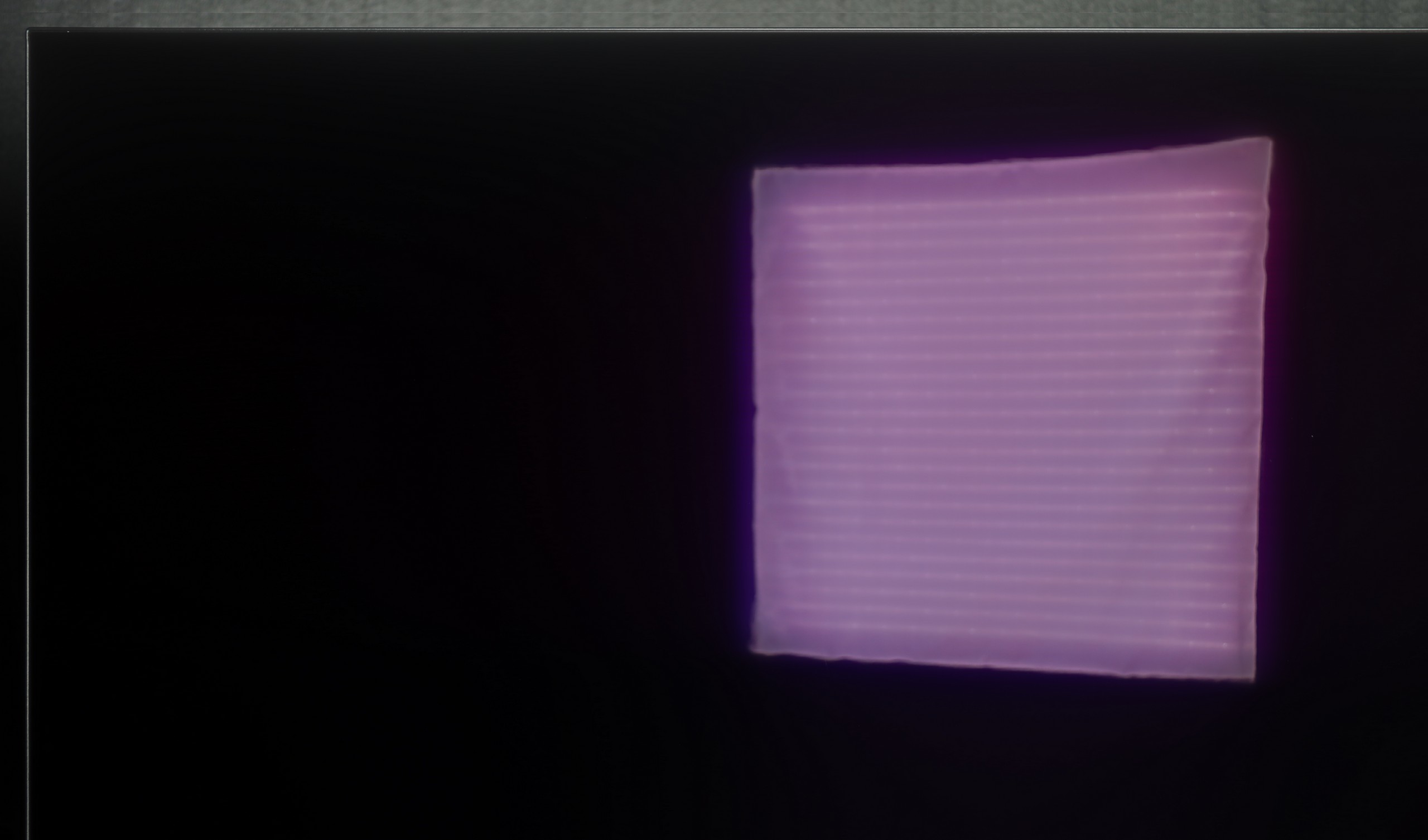

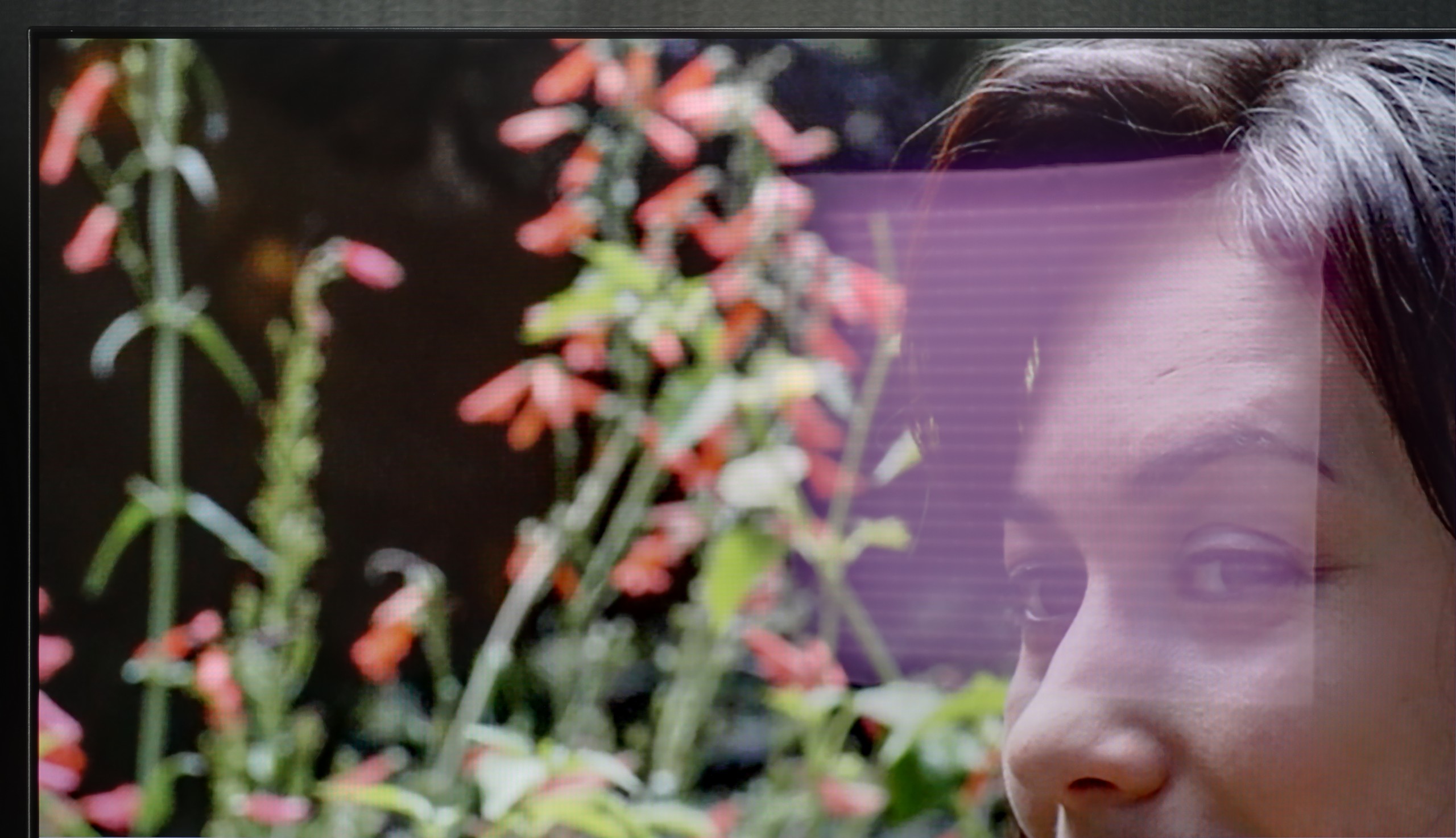
Matrix brightness
Average luminance SDR
Philips OLED820: 345 cd/m2
Philips OLED909: 427 cd/m2
Philips OLED909, despite the glossy surface of the panel, handles glare from direct light hitting the screen quite well. This is especially useful in brighter rooms where reflections can interfere with viewing. However, the use of micro-lens technology has its limitations – black levels during the day take on a slightly pinkish hue. A similar, albeit more pronounced phenomenon can be observed in QD-OLED panels.
When it comes to brightness, the OLED909 achieves an average brightness in SDR of 430 cd/m². This is enough to comfortably use the TV even in moderately challenging lighting conditions. Nevertheless, it is worth remembering that the brightness levels of OLEDs still fall behind TVs with mini-LED technology, which can be several times brighter.
Details about the matrix
Subpixel Structure:

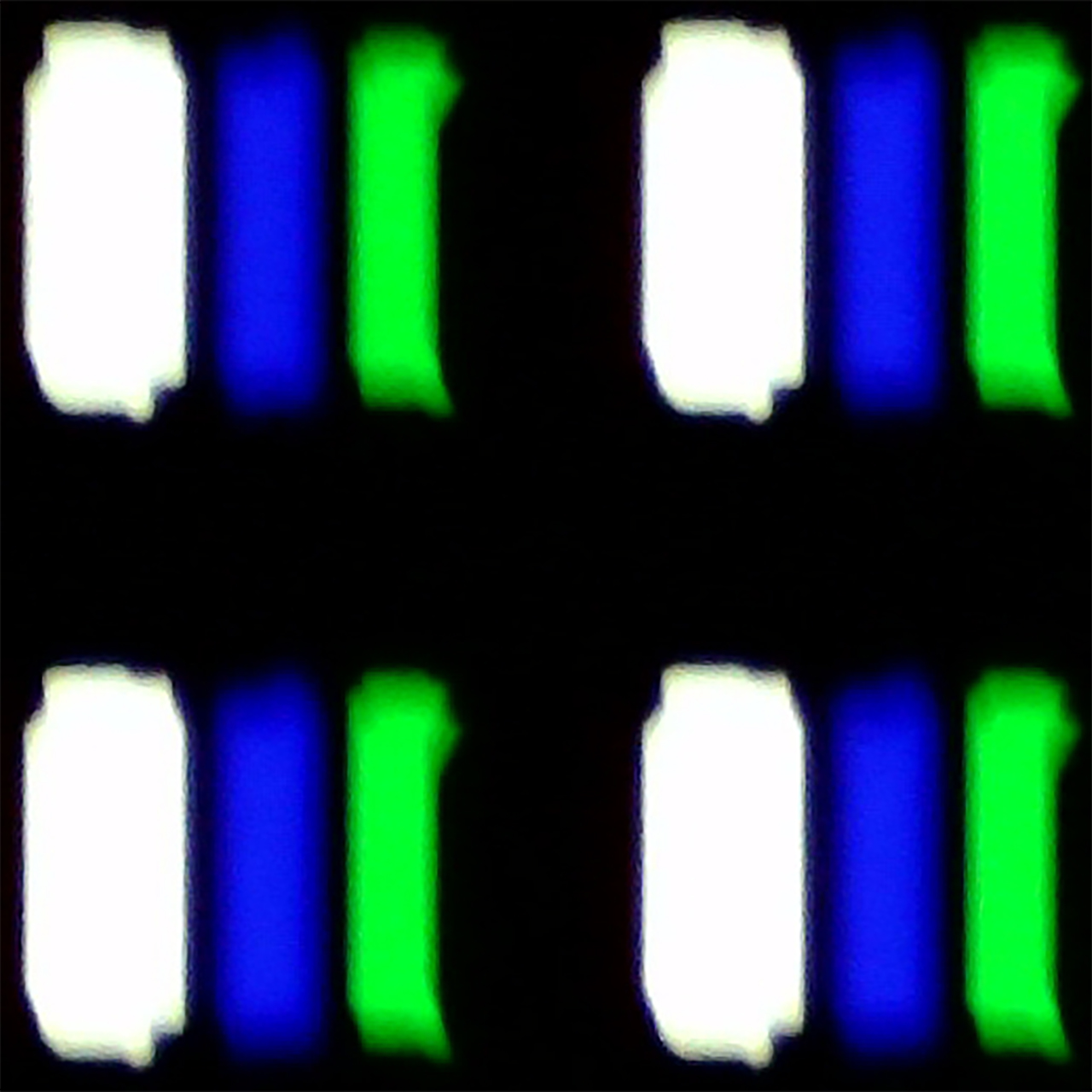
Panel uniformity and thermal imaging:


TV features
6.7/10
6.8/10
- HDMI inputs2 x HDMI 2.0, 2 x HDMI 2.1 48Gbps2 x HDMI 2.0, 2 x HDMI 2.1 48Gbps
- OutputsToslink (Optical audio), eARC (HDMI), ARC (HDMI), Mini-Jack (Headphones)Toslink (Optical audio), eARC (HDMI), ARC (HDMI), Mini-Jack (Headphones)
- Network InterfacesWi-Fi 2.4GHz, Wi-Fi 5GHz, Ethernet (LAN) 100MbpsWi-Fi 2.4GHz, Wi-Fi 5GHz, Ethernet (LAN) 100Mbps
- TV receptionDVB-T, DVB-T2, DVB-S, DVB-S2, DVB-CDVB-T, DVB-T2, DVB-S, DVB-S2, DVB-C
Classic features:
- Recording to USB (terrestrial TV)
- Recording programming
- Picture in Picture (PiP)
- RF remote control (no need to aim at the screen)
- Backlit remote control
- Teletext
- Audio only mode
- Bluetooth headphones support
- Simultaneous Bluetooth headphones & TV audio
Smart features:
- AirPlay
- Screen mirroring (Windows Miracast)
- Voice search
- Voice search in native language
- Ability to connect a keyboard and mouse


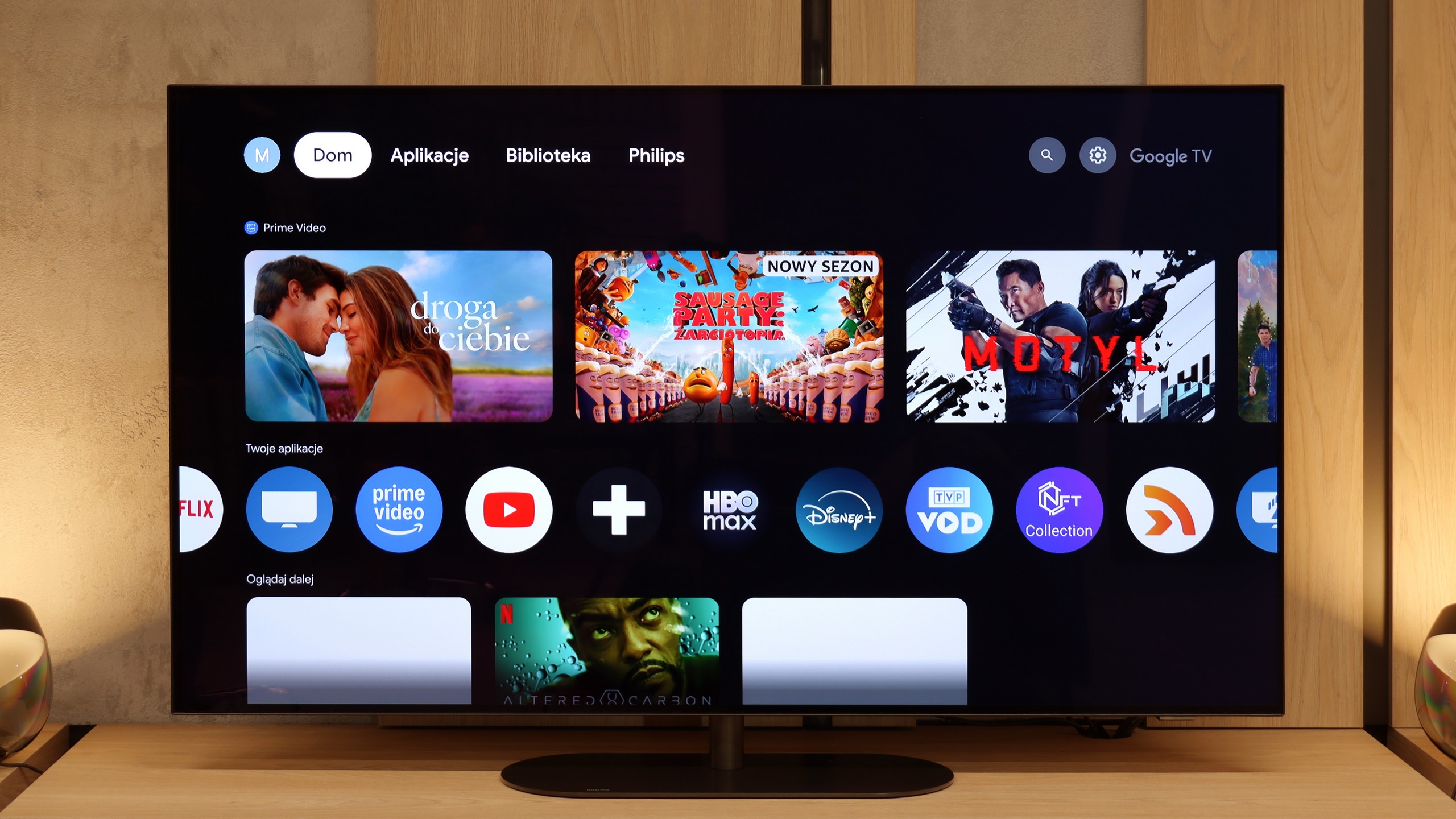
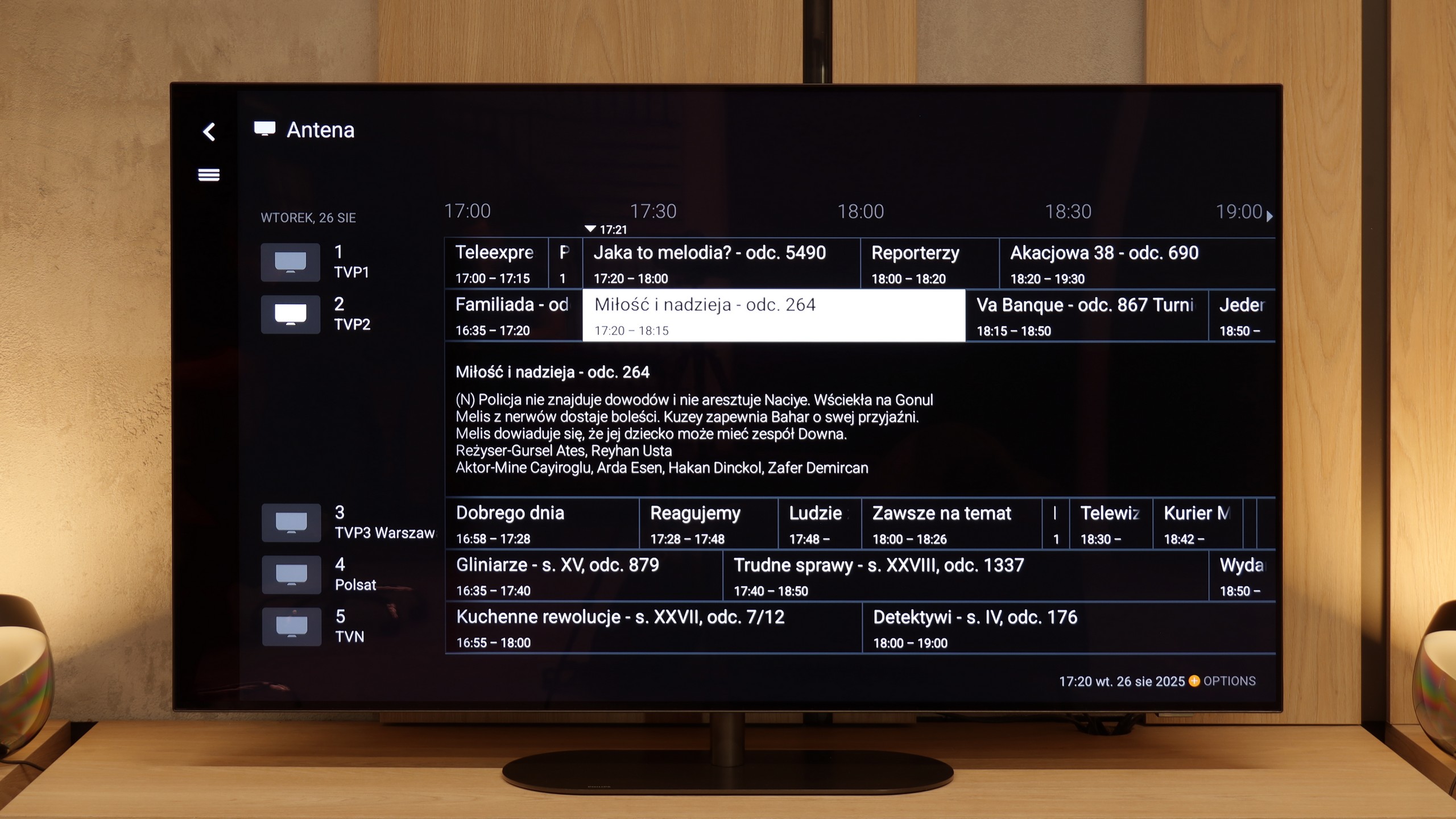
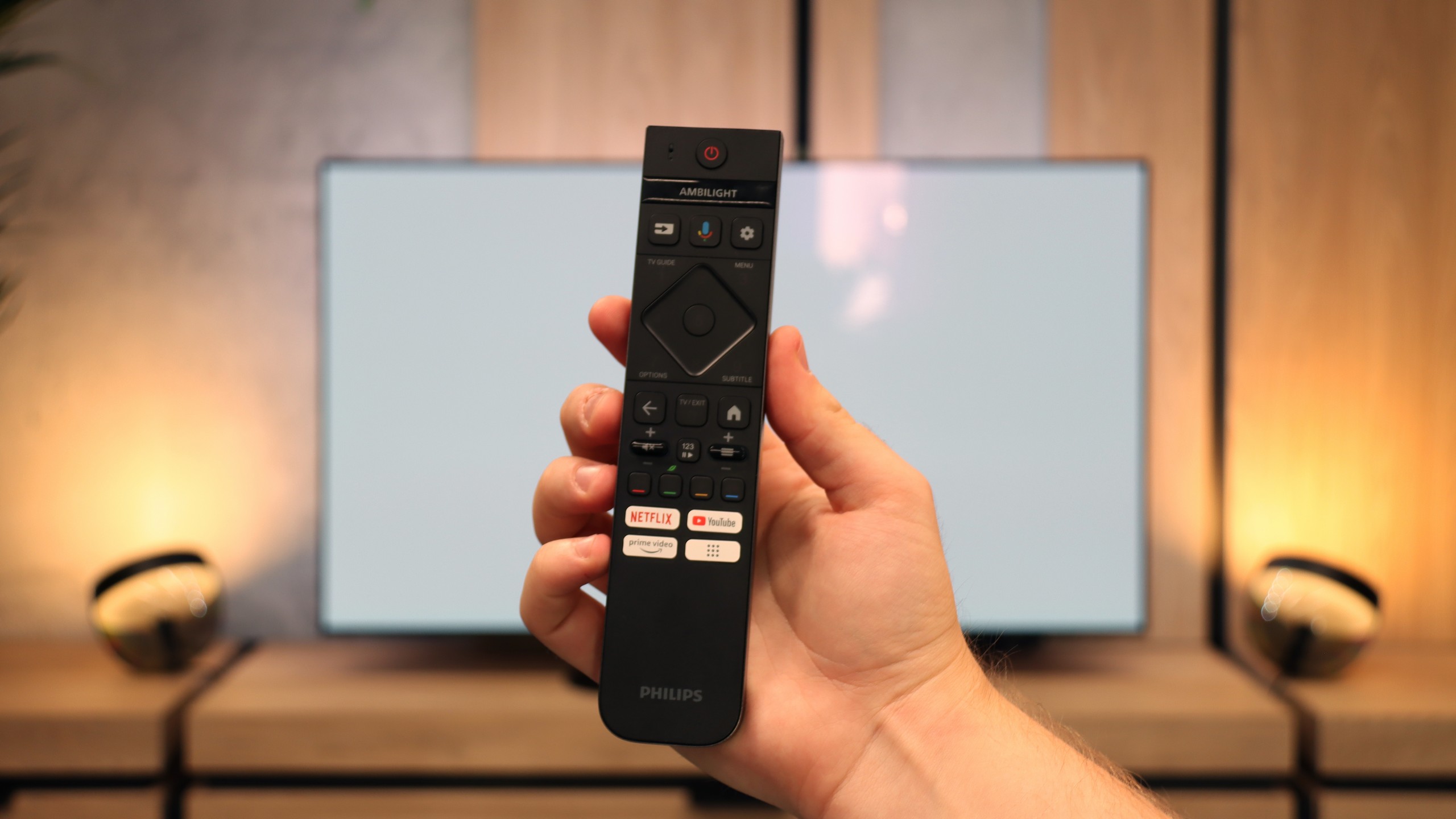
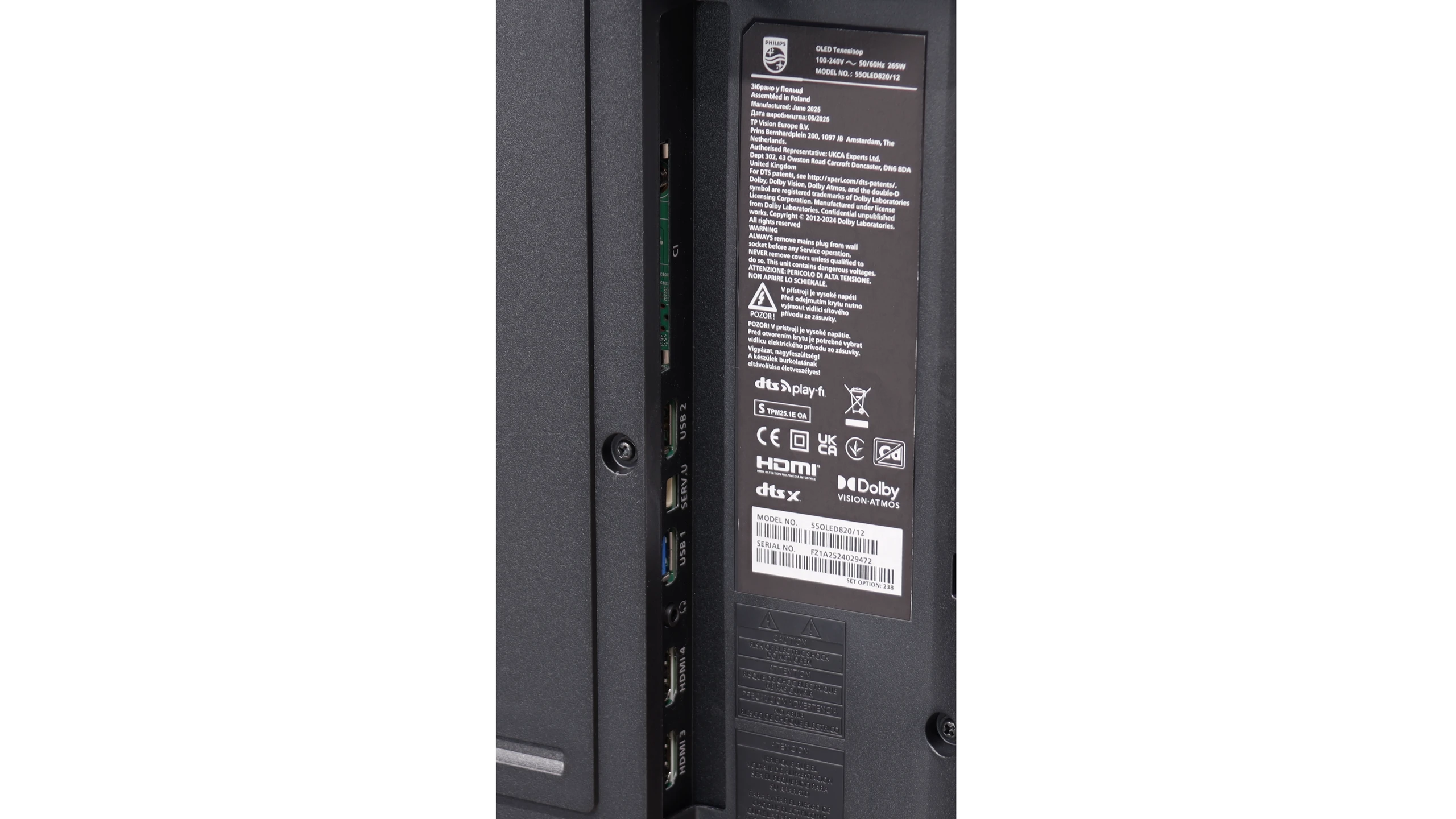
In the OLED909 model, Philips has abandoned its proprietary Titan OS system in favor of Google TV. This solution provides users with significantly greater possibilities, especially in terms of app availability. Google TV offers a vast library of programs to download, from popular streaming services to tools and games. The system also supports voice commands, making it easier to search for content and manage the device, enhancing the comfort of daily use.
In terms of usability features, the television also performs well. It includes support for AirPlay and Miracast technologies, which allow for easy streaming of audio and video from other devices. Additionally, the TV seamlessly supports external accessories, such as mice or keyboards, enabling it to act as a more versatile entertainment center. However, it is worth noting that the OLED909 does not include the PiP (picture-in-picture) feature or the ability to record programs from built-in tuners. A novelty in this model is the backlit remote, which looks attractive and operates in hybrid mode – it can function as a smart remote, and upon pressing the appropriate button, the numeric keypad is also illuminated. Unfortunately, its operation can be irritating, as it relies on standard infrared control, and the only function that supports RF (radio) technology is voice command functionality.
The Philips OLED909 also stands out from other models with its four-sided Ambilight system. This allows the TV to create dynamic lighting around the screen that adapts to the displayed content. This solution not only enhances the feeling of immersion but also improves viewing comfort in darker rooms. Ambilight remains one of the most distinctive features of Philips televisions, which is hard to find with competitors.
GoogleTV on OLED820
Philips OLED820 runs on the Google TV system, which immediately places it among the televisions that truly offer freedom of use. It's a fantastic platform that needs no introduction – you'll find almost an endless number of apps, from popular VOD services to niche programs or games. Google TV also allows you to customize the home screen, tailoring content to your preferences, so the television actually "learns" your viewing style. A huge plus is also Google's voice assistant – quick, natural, and effective. It can understand even less obvious questions, and in practice, it works significantly better than many competitors. Unfortunately, there was a hiccup – the screen mirroring function simply didn’t work during testing. This can be considered a minor issue, but in 2025, things like this just shouldn't happen.
Classic Features of OLED820
When it comes to classic additions, the OLED820 doesn't strive for conservative notes. On one hand, we get a backlit remote control with a numeric keypad that is quite well organized and comfortable to use. On the other hand, you have to aim it at the screen because it operates on infrared, which is more reminiscent of equipment from a decade ago than a modern television. It also lacks a few features that are often found in competitors – there's no USB recording from tuners or a PiP mode. A nice touch among classic solutions is the mini jack analog input for headphones. This is a rarity today, and it can prove useful – whether for a senior with an additional headphone station or for someone who would like to connect older speakers.
AmbilightTV OLED820
You also can't overlook Ambilight, a feature that is a hallmark of Philips. This solution impacts not only the television's appearance but also the reception of content. The lighting system can be set in various ways, from a multicolored mode that dynamically follows the image to calmer, static backlighting. We definitely recommend the latter option because the gentle light behind the screen makes the viewed content combined with the OLED matrix look even deeper and more engaging. It's a simple yet very effective addition that has given Philips televisions character for years.
Playing files from USB
7.9/10
9.5/10
Supported photo formats:
Maximum photo resolution:

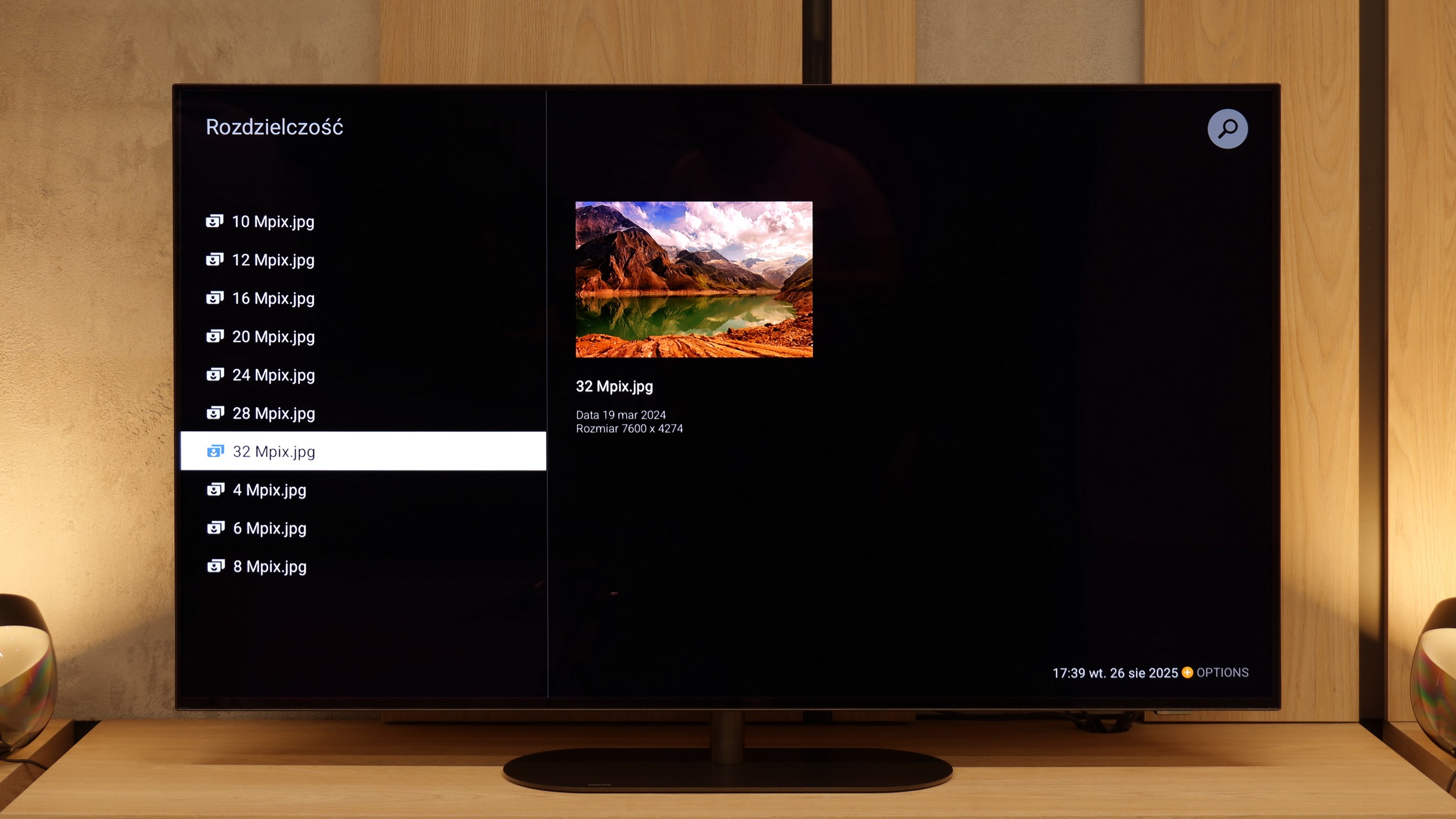
The Philips OLED909 has a built-in multimedia player that easily handles most popular video, audio, and subtitle file formats. However, it is worth noting that the pre-installed player does not support Polish characters in subtitles, which can be inconvenient when watching content from USB. Fortunately, thanks to the Google TV system, this flaw can be easily circumvented. You just need to download an alternative player from a wide range of available applications that will provide full support for Polish characters and additional features, such as more advanced subtitle settings or support for less common formats. This means that even minor shortcomings of the factory software do not pose a significant problem for users.
The Philips OLED820 has a built-in file player with USB, which at first glance looks quite clunky, but in practice, it works surprisingly well. One could even say that it is one of the best built-in players available in televisions. It handles virtually every type of file: photos, videos, or music, with minor exceptions, most of which are also not supported by the competition. And if someone still feels something is missing, there is always the option to install the VLC app from the Google Play library and the problem disappears.
Apps
9.6/10
9.6/10














































Sound
8.1/10
7.7/10
- Maximum volume-81dB
- Dolby Digital Plus 7.1
- Dolby True HD 7.1
- Dolby Atmos in Dolby Digital Plus (JOC)
- Dolby Atmos in Dolby True HD
- DTS:X in DTS-HD MA
- DTS-HD Master Audio
The Philips OLED909 stands out with its built-in soundbar featuring a navy blue fabric finish, branded with the renowned Bowers & Wilkins. At the bottom of the screen, we find a solid speaker system, additionally supported by a built-in subwoofer at the back of the casing. The sound quality is truly impressive for the class of this device. The soundbar delivers clear and detailed sound, effectively handling both dialogues and sound effects in movies and games.
The Philips OLED 820 features a built-in 4.1 speaker system with a total power of 70 W. At the back of the chassis, there is a subwoofer that provides quite solid and deep bass. The classic speakers responsible for the rest of the range are located at the bottom of the television, which means that the sound does not always propagate as we would like. However, the overall sound quality can be considered acceptable – series, television programs, or occasional music listening perform well, with slight bass support. This should be sufficient for daily use, although we still recommend purchasing even an inexpensive soundbar, which will significantly enhance the user experience.
Acoustic Measurements
No acoustic data
81dBC (Max)
75dBC
